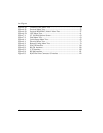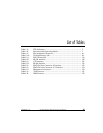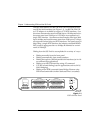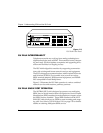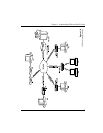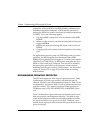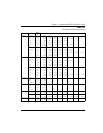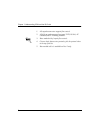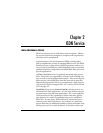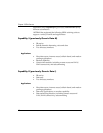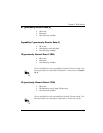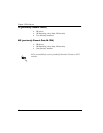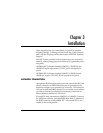
Chapter 1.Understanding ISDN and the ISU 2x64
6
ISU 2x64 Dual Port ISDN Service Unit User Manual 61200051L1-1D
When the ISU 2x64 is used on an existing ISDN line that is not
multipoint, with one SPID or no SPID numbers, additional con-
siderations should be addressed. If DTE specific operation is
desired, the ISDN line must be converted to multipoint operation
(2 SPIDS). If not, the following applies:
1. If a single SPID is assigned, it must be entered under SPID
DTE#2
.
2. When no calls are active, the first incoming call is always di-
rected to
DTE#2
.
3.
DTE#1
only accepts incoming calls when a call is active on
DTE#2
.
4. Outgoing calls can be placed without restrictions from either
port.
For applications involving only one SPID being used on a multi-
point line, the SPID assigned must be entered under SPID
DTE#2
. For applications involving the S/T version (part number
1200.051L5 and 1200.051L6), no SPID(s) are used when the Euro
ISDN or VN4 switch type is selected. The call will be routed to
the appropriate port based on the directory number entered
under the local directory number (LDN) prompt . See the section
Setting the Terminal ID
on page 32 for more detail on entering
SPID numbers.
RECOMMENDED OPERATING PROTOCOLS
The ISU 2x64 supports a wide range of operating modes. Many
combinations of circuit type, protocol, and data rate may be
selected. However, only the combinations shown in Table 1-B are
recommended. As noted in Table 1-B, all asynchronous rates sup-
port flow control. Flow control is required when operating at
115200 bps using V.120, PPP, MLPPP, SAP, or BONDING proto-
cols.
Table 1-B shows that a given data rate may be achieved by more
than one protocol/rate adaptation selection. The table is orga-
nized so that selections with lower throughput delay are nearer
the top of the table for any given circuit type. Therefore, users
should choose a protocol and rate nearer the top of the list for any
given circuit type.



